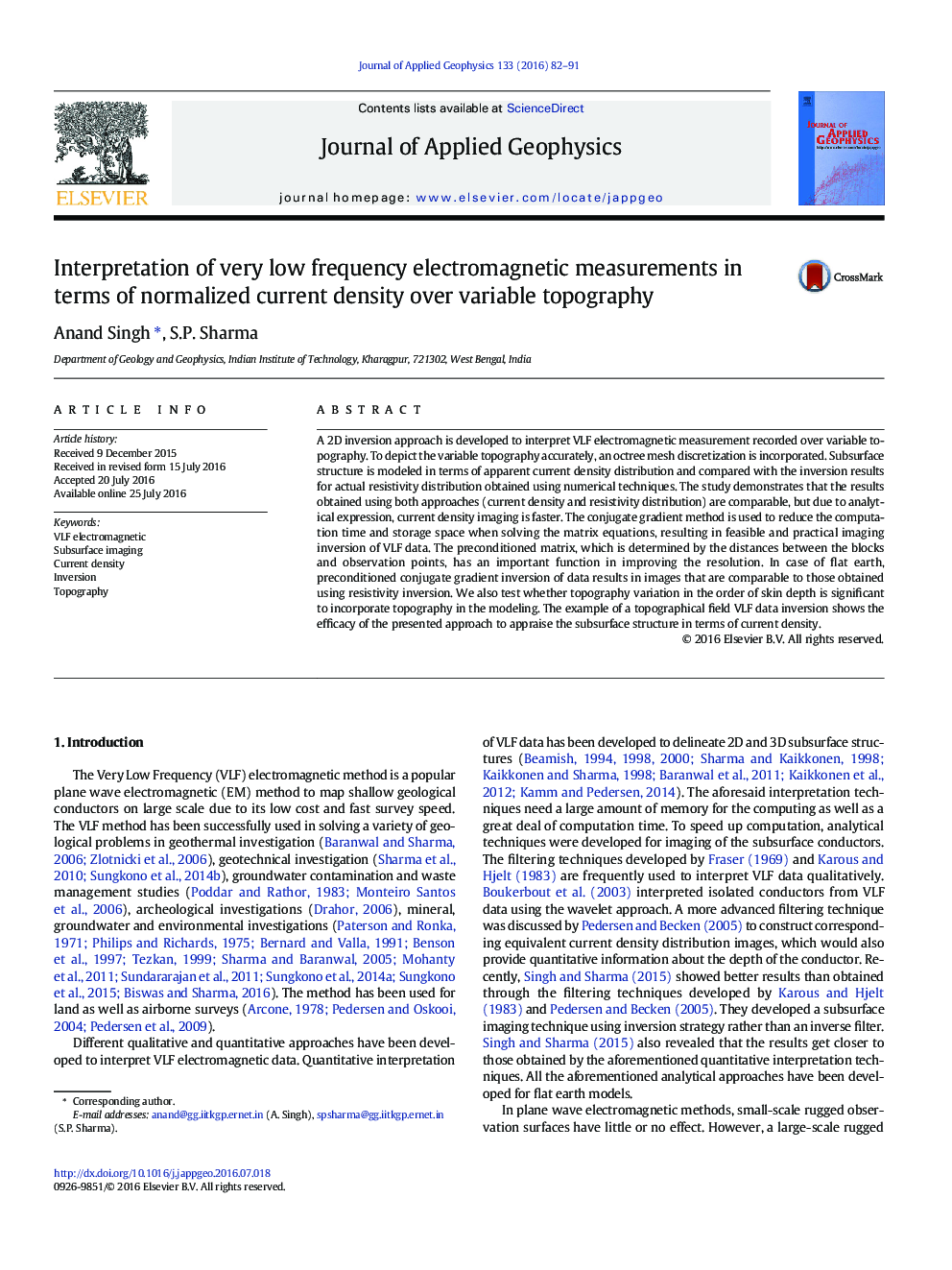| Article ID | Journal | Published Year | Pages | File Type |
|---|---|---|---|---|
| 4739757 | Journal of Applied Geophysics | 2016 | 10 Pages |
•A new subsurface imaging technique for the interpretation of VLF electromagnetic data over variable topography.•Subsurface structure modeled in terms of normalized current density.•Octree mesh discretization incorporated to depict the topography accurately.•Subsurface imaging technique using inversion strategy rather than an inverse filter.•The conjugate gradient method is used to reduce the computation time and storage space.
A 2D inversion approach is developed to interpret VLF electromagnetic measurement recorded over variable topography. To depict the variable topography accurately, an octree mesh discretization is incorporated. Subsurface structure is modeled in terms of apparent current density distribution and compared with the inversion results for actual resistivity distribution obtained using numerical techniques. The study demonstrates that the results obtained using both approaches (current density and resistivity distribution) are comparable, but due to analytical expression, current density imaging is faster. The conjugate gradient method is used to reduce the computation time and storage space when solving the matrix equations, resulting in feasible and practical imaging inversion of VLF data. The preconditioned matrix, which is determined by the distances between the blocks and observation points, has an important function in improving the resolution. In case of flat earth, preconditioned conjugate gradient inversion of data results in images that are comparable to those obtained using resistivity inversion. We also test whether topography variation in the order of skin depth is significant to incorporate topography in the modeling. The example of a topographical field VLF data inversion shows the efficacy of the presented approach to appraise the subsurface structure in terms of current density.
